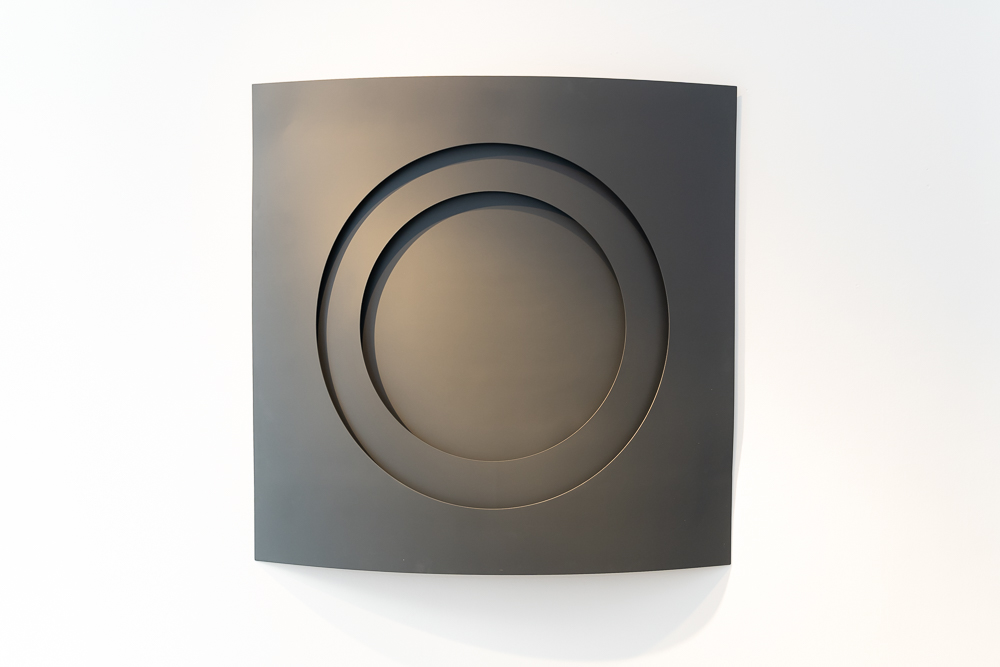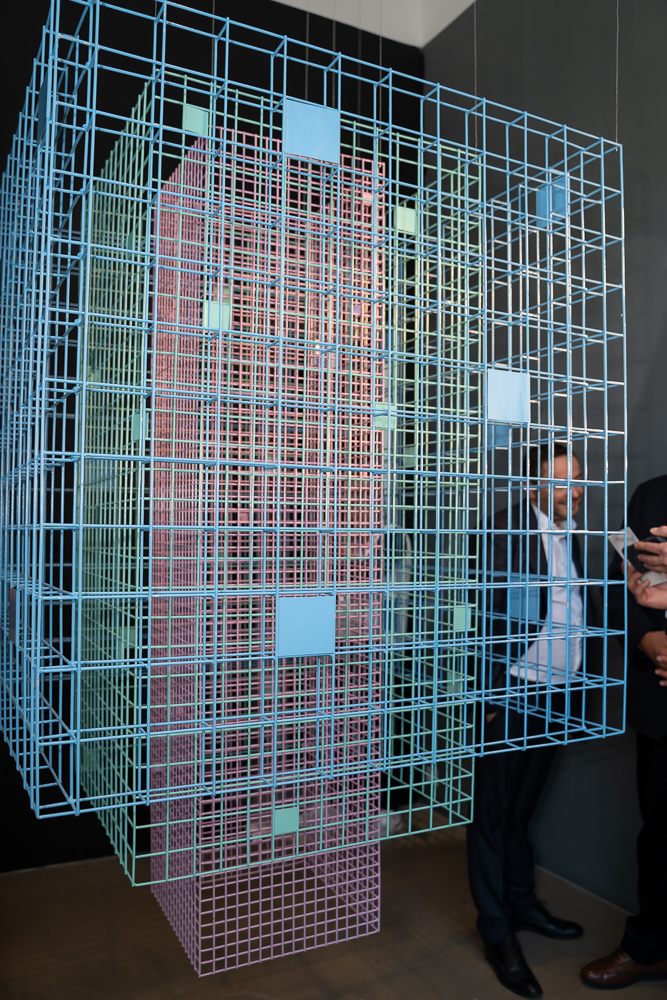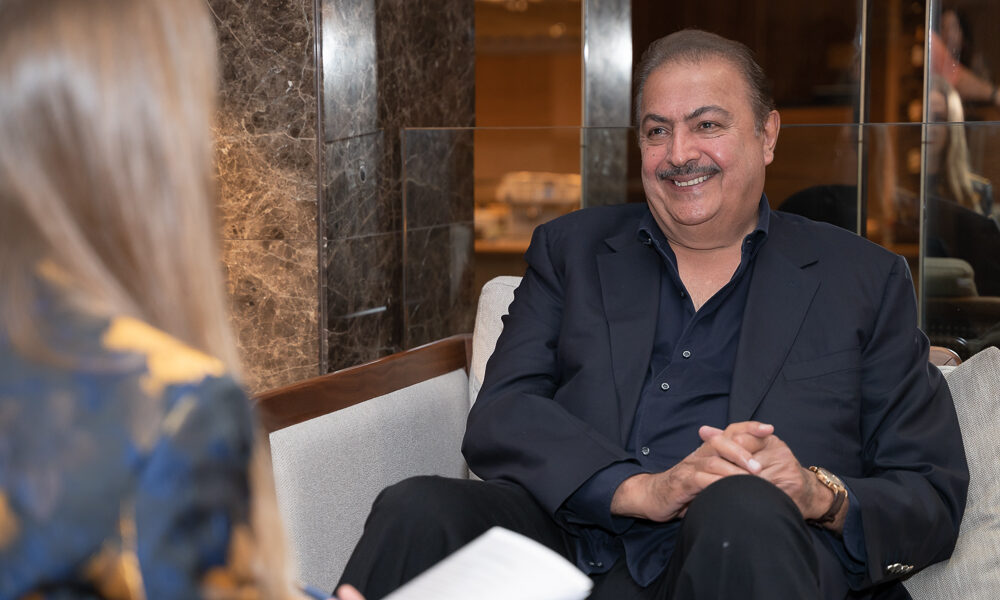SOCIETY met artist and member of the Bahraini royal family, Sheikh Rashid bin Khalifa Al Khalifa during his visit in Vienna and talked with him about his art, the process of creating and his current exhibition at the Mario Mauroner Contemporary Art Gallery, among other things.
You had your first solo exhibition at the age of 18. Was there a specific moment that encouraged you to be an artist?
I was always a creative thinker and interested in expressing my creativity from as long as I can remember. My peers and teachers felt that I was inherent of artistic talent from a very young age and encouraged me to create and take part in exhibitions, but I also felt inclined to paint for personal reasons. This desire naturally continued as I entered my teens. In my last year of high school, I received an award for my participation in our annual school art exhibition, which was a paint box and a book about the Italian Baroque artist, Canaletto – I remember that vividly. I think it was a defining moment, as it was then that I began to feel conscious of my creative talent and its ability to lead me in the right direction. I went on to study at Hastings College of Art and Design when I was 18 and after graduating, I never turned my back on my practice.
Is there a specific process or an underlying feature that you always repeat when creating a piece of art? How do you work?
My work has always been about evolution, development and progression. One thing naturally leads to another. I started my career as a landscape painter in the ‘70s and ‘80s, then moved on to more figurative work, which merged elements of my landscapes with figures. In the late 1990s and onto the mid-2000s, I began to explore more abstract shapes and forms, yet the feminine form continued to play an important role in these works. Following this, in the late 2000s, I began to remove clear details from my work, and to explore a shapelier canvas, a convex surface, which I felt was more engaging. Interestingly, these pieces became more reminiscent of my landscapes – through their atmosphere, aura and colour palette. This was also the beginning of my move towards minimalism, and it was then that I began exploring other surfaces (aluminium), textures and mediums (lacquer paint and enamel) as well as symmetrical forms – like the circle. I suppose I have always been drawn to depict my immediate landscape – to the colours and light – and to express elements of traditional Middle Eastern architecture and design in a contemporary manner. Interestingly, the results, in my opinion, are spiritual and somewhat feminine forms that evoke the sensibility of my earlier works.
What are your main sources of inspiration? Can you describe the sensations/ emotions you feel while creating art? In what ways does your heritage influence your art?
As mentioned, I’m inspired by my immediate landscape – the landscape, colours and light of Bahrain as well as both traditional and contemporary architecture. I grew up painting the scenes around me, the wadis of the desert, the coastlines of Bahrain, the farmlands and date palms. Traditional Bahraini architecture is so unique – designed specifically to compliment and work in synergy with the culture, landscape, weather and atmosphere. There are certain colours and light that are so specific to Bahrain at dawn and dusk. These things inspired me when I was younger and I believe they continue to inspire my latest work which focuses on shadow and light. Sunrise and sunset is key to our existence and in many ways, my works are reminiscent of eclipses and sunrises, of the crescent moon and the light at dusk. I also see myself as a designer and am always involved in and oversee various design projects. I see our landscape changing but perhaps by merging both the contemporary and traditional, I can pay homage to it.
How did your studies in the UK influence your art? Did or does the theorizing/analysing of art have/has an impact on the actual creation of art for you?
Studying in the UK definitely had an impact on my art at a young age as it gave me a much broader awareness of artistic practice and possibilities. Not only did I learn materials and methods but I was able to gain inspiration from other artists work and to visit galleries and exhibitions – to get a sense of the history of art. Unfortunately we did not have the same tools and opportunities available in Bahrain at the time. Each time I travel, I visit exhibitions, museums, galleries and fairs – it motivates and inspires me and I think it is of utmost importance to stay up to date with contemporary practice – art is a reflection of the world around us. It helps us think and consider things differently.









How did you experience the pandemic? In what ways did it influence your current work? And what role can art, in your opinion, play in times of crisis?
The pandemic was difficult in the sense that I tend to create works with an exhibition in mind and for the past two years, we decided to put exhibitions on hold. However, I did continue to create, knowing that eventually opportunities would arise again. In times of crisis, art plays a vital role in giving society hope and an outlet and to inspire and remind ourselves that the creative process is key to our existence.
In which phases of your life are you the most productive? And do you ever feel a pressure to create?
I suppose like most artists, I’m most productive when I have the time and space to really put myself to work and that doesn’t just mean physical space but the mental space where I can focus my attention completely on a body of work, without distractions. My daily life and daily work require me to take on so many very different roles, from overseeing design and construction projects to my work with the Ministry of Immigration, not to mention my family who are of utmost importance. Such responsibilities require being methodical and extremely structured, which I suppose in many ways doesn’t always allow me the free time to focus solely on art.
How important is the interaction with the “audience”, the viewers, for you? Do you consider your artwork as somewhat detached from the viewer, or dependent or connected to them?
The viewers interaction is of utmost importance. Even with my earlier works, exploring a more shapelier ‘convex’ canvas, the purpose of this was to engage more with the viewer. My later works change and appear to shift and move, depending on the angle with which they are viewed, creating an experience for the audience.
How did the cooperation with Mario Mauroner Contemporary Art Gallery come about? Is it your first time exhibiting in Austria/Vienna?
Mario Mauroner Contemporary Art had seen my work and felt that it would complement the style of exhibitions that they typically present as well as the artists that they work with. They have worked with a number of installation artists that consider space, structure and design, themes that compliment my latest work. Yes, it is my first time exhibition in Austria, though I have been to Vienna before.
Why “Tesselate”? What is the main essence of the show and which message would you like to convey with this exhibition?
The verb ‘tesselate’ literally means to form or to adorn with mosaic. It is a repeating pattern that fills a space without overlapping. It is key to much Islamic geometry. Much of my work, particularly my parametrics and hanging mobiles, are inspired by attributes of traditional Middle Eastern architecture and design that’s roots lie in Islamic geometry, such as the Mashrabiya. You get the impression that the repetition of pattern can continue beyond the frame.
With this exhibition, I wanted to introduce my latest work to a new audience – but without being overbearing. The newest pieces are both bold and inviting at the same time.
Digitalization opened up an infinite space for showcasing art – what is your opinion on that?
I do believe that there is a place for it, especially in such unprecedented times. It’s interesting though because it is very difficult to get a real sense of my pieces unless you experience them in person. Viewing them online just doesn’t give the same impression at all, despite us also taking video footage of them. It’s so important for art to be tangible and present and often, that is difficult to capture through digitization.
You are also collecting art – how do you decide which art work you want to add to your collection?
I don’t really follow a specific collecting theme – I got some pieces simply because I liked them and others because I wanted to support the artists behind the work – young as well as already established ones.
If you could choose one art work out of all (famous) ones for your personal collection – which one would it be?
The Kiss, By Gustav Klimt.
See the exhibition at:
Mario Mauroner Contemporary Art
3 SEPTEMBER – 3 OCTOBER
Weihburggasse 26, 1010 Wien
https://www.rashidalkhalifa.com/work/mario-mauroner-en/














Photos: SOCIETY/Ugur Karakan

